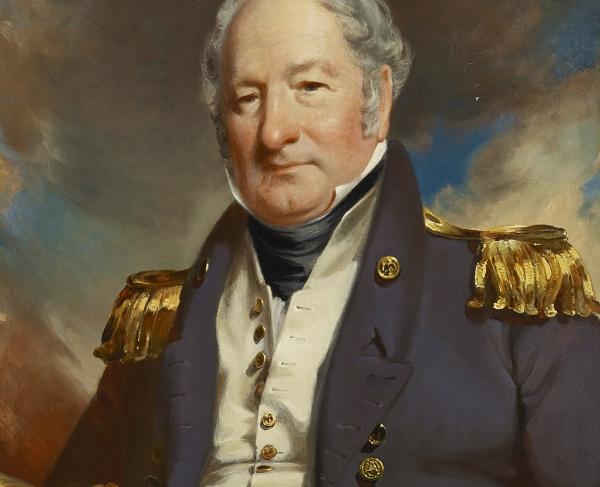James Yeo

Plagued by ill-health since childhood and frequently contracting various tropical diseases, James Lucas Yeo nevertheless served one of the most daring and adventurous careers ever seen in the Royal Navy. Yeo joined the Navy by dropping out of school at the age of 10, probably inspired by his father who worked as a victualler, the naval equivalent of a quartermaster. By 14, he had already risen to acting-lieutenant on a 16-gun sloop and became full lieutenant in 1797. Though he often struggled with various infections, particularly yellow fever in tropical areas, Yeo served and acquitted himself well in waters all over the war, including the West Indies and the Adriatic Sea. But in 1805, Lieutenant Yeo catapulted himself into fame when, with only 50 men, he captured a shore battery on the Spanish coast with a garrison of over 200, suffering only 6 casualties. For this act, he was granted a promotion, and given his first command over the HMS Confiance, a 22-gun corvette he and his men captured in the battle.
From there, Yeo continued to astound all those around him with his audacity and quick thinking, including the old royal families of Europe. Participating in the conquest of French Guiana, in South America, Yeo aided the Portuguese and Brazilian troops in taking the fortified city of Cayenne in only a week and then chasing off a large French Frigate Topaze with only the Confiance and the bluff of hidden support nearby. For his courage, the Portuguese Prince Regent João personally thanked Yeo at his court in Rio de Janeiro (where his family had fled while Lisbon was threatened by Napoleon) and had him inducted as the first and only Protestant knight in the Military Order of Aviz. Britain’s own monarch, George III, honored him as well, granting him a knighthood in the Order of the Bath.
The beginning of the War of 1812 marked a rapid change to Yeo’s sterling career, one that required a great deal of adaptation and cooperation with his colleagues. Fully confident in their superiority over the Americans on the high seas, Yeo’s superiors assigned him to the Great Lakes, hoping his talents would secure British dominance on the frontier. Yeo received a promotion to commodore and set about commanding his new fleet on Lake Ontario. He performed well, but Sir James met his match in his American counterpart Isaac Chauncey, making the war on the lake a stalemate until Yeo successfully launched the HMS St. Lawrence, a 114-gun ship of the line, the first of its kind built exclusively for freshwater use. But what truly robbed Yeo of a decisive victory was his utter inability to get along with British Army General George Prevost, as both men appeared to hold a severe personal dislike of the other. Their rivalry came to a head with the amphibious invasion of Sackets Harbor in 1813, where Yeo’s bombardment of the American defenses proved insufficient, and Prevost failed to take advantage of any the gains Yeo had made. Theodore Roosevelt later wrote in his commentaries on the War of 1812 that “The admirers of Sir James lay the blame on Sir George, and vice versa; but in reality neither seems to have done particularly well.” Despite these mishaps and the continued mistrust between the two men, Yeo was given further honors for his service after the war ended with the rank of Knight Commander in the Order of the Bath. Unfortunately, he was also sent on his final mission to the West African coast of that year, where he finally succumbed to his old enemy yellow fever and passed away on the trip back to England.
Over a century after his death, the Royal Military College of Canada honored Sir James by naming the new dining and mess hall after him in 1936. He also may have served as one of the various sources of inspiration for C.S. Forester’s popular Hornblower series.


